About engines for intercontinental ballistic missiles
From the point of view of features of power plants, all outdated, relevant and promising ICBMs can be divided into two main classes. Such weapon can be equipped with liquid-propellant rocket engines (LRE) or solid fuel engines (RDTT). Both classes have their advantages, due to which they are used in various projects, and so far none of them have been able to oust the "competitor" from their field. The question of power plants is of great interest and is worth a separate consideration.
History and theory
It is known that the first rockets, which appeared many centuries ago, were equipped with solid-fuel engines on the simplest fuel. Such a power plant maintained its position until the last century, when the first liquid fuel systems were created. In the future, the development of two classes of engines proceeded in parallel, although the LRE or RDTT from time to time replaced each other as industry leaders.
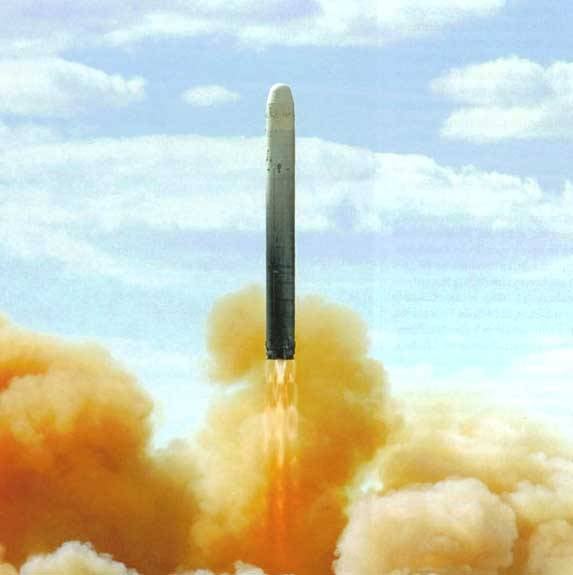
The launch of the UR-100N UTTH rocket with a liquid engine. Photo Rbase.new-factoria.ru
The first long-range missiles, the development of which led to the emergence of intercontinental complexes, were equipped with liquid engines. In the middle of the last century it was the LRE that allowed us to obtain the desired characteristics using available materials and technologies. Later, experts from leading countries began to develop new varieties of ballistic powders and mixed fuel, resulting in the emergence of solid propellant rocket propellers, suitable for use on ICBMs.
To date, both liquid and solid propellant rockets have proliferated in strategic nuclear forces of various countries. It is curious that the Russian ICBMs are equipped with power plants of both classes, while the United States, a few decades ago, abandoned liquid engines in favor of solid-fuel engines. Despite this difference in approaches, both countries managed to build missile groups of the desired appearance with the required capabilities.
In the field of intercontinental rockets, the first liquid engines. Such products have a number of advantages. Liquid fuel allows you to get a higher specific impulse, and the design of the engine allows the change of thrust relatively simple ways. Most of the volume of the rocket with the LRE occupy the fuel and oxidizer tanks, which in a certain way reduces the requirements for the strength of the body and simplifies its production.
At the same time, the rocket engines and missiles equipped with them are not without flaws. First of all, such an engine is characterized by the highest complexity of production and operation, which negatively affects the cost of the product. The first models of ICBMs had a drawback in the form of preparation for launch. The fuel and oxidizer were refueled immediately before the start, and in addition, in some cases it was associated with certain risks. All this had a negative effect on the combat qualities of the missile complex.
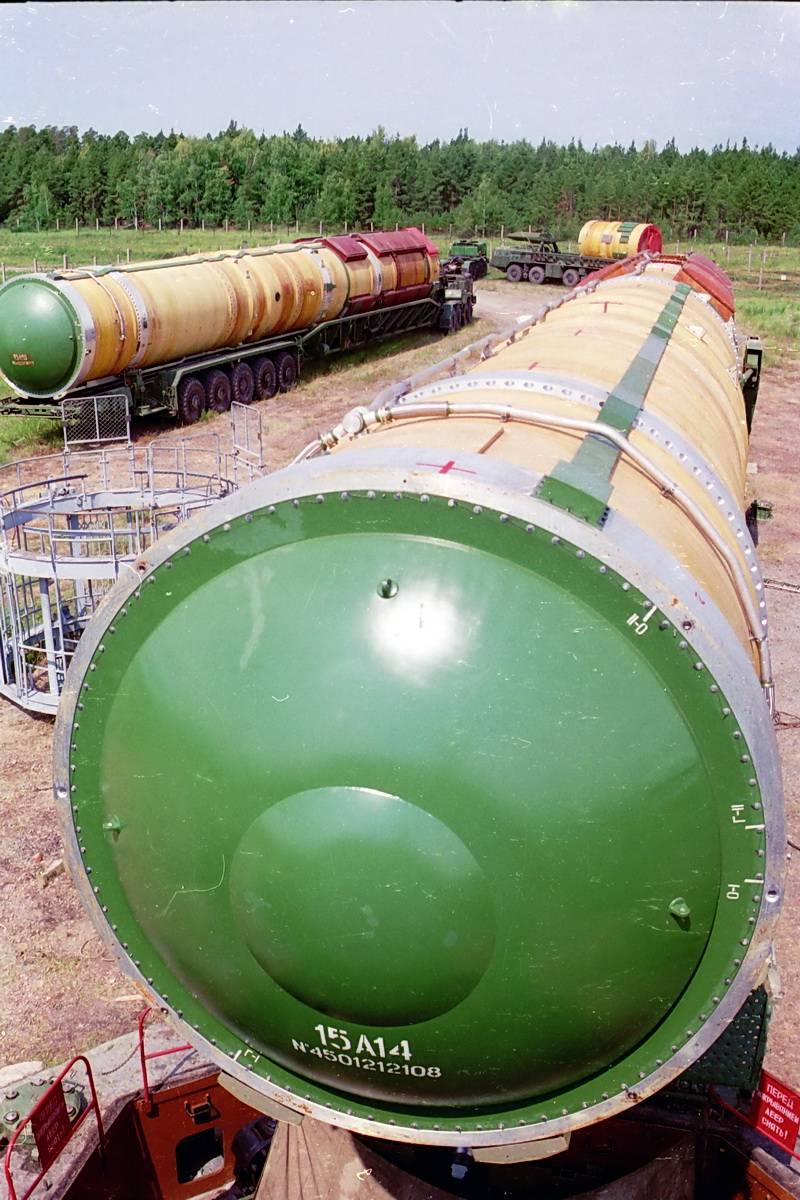
Liquid missiles R-36М in transport and launch containers. Photo Rbase.new-factoria.ru
The rocket engine of solid fuel and the rocket built on its basis has positive sides and advantages over the liquid system. The main plus is the lower cost of production and simplified design. Also, solid propellant rocket motors have no risks of aggressive fuel leaks, and in addition, they are distinguished by the possibility of longer storage. On the active part of the flight of an ICBM, a solid propellant engine provides better acceleration dynamics, reducing the likelihood of successful interception.
A solid fuel engine loses its liquid in its specific impulse. Since the burning of a charge of solid fuel is almost uncontrollable, the control of the engine, stopping or restarting require special technical tools that are complex. The solid propellant rocket motor housing functions as a combustion chamber and therefore must have adequate strength, which places special demands on the units used and also has a negative effect on the complexity and cost of production.
LRE, RDTT and SNF
Currently, Russia's strategic nuclear forces are armed with about a dozen ICBMs of various classes designed to solve actual combat missions. The Strategic Missile Forces (RVSN) operate five types of missiles and expect the appearance of two more new complexes. The same number of missile systems is used on submarines of the Navy, but in the interests of the marine component of the “nuclear triad”, fundamentally new missiles are not yet developed.
In spite of its solid age, the UR-100N UTTH and P-36М / М2 missiles still remain in the troops. Such heavy-duty MBRs have several stages with their own liquid-propelled engines. With a large mass (more than 100 t at the UR-100N UTTH and about 200 t at the P-36М / М2), the two types of missiles carry a considerable fuel reserve, ensuring the shipment of a heavy warhead at a distance of at least 10 thousand km.
Since the end of the fifties in our country, the problems of using solid propellant solid propellant engines on promising ICBMs have been studied. The first real results in this area were obtained by the early seventies. In recent decades, this direction has received a new impetus, thanks to which a whole family of solid-propellant rockets has emerged, representing the consistent development of common ideas and solutions based on modern technologies.
Currently, the Strategic Missile Forces have missiles RT-2PM Topol, RT-2PM2 Topol-M and PC-24 Yars. In this case, all such missiles are operated with both mine and mobile ground launchers. The three types of rockets, created on the basis of common ideas, are built according to a three-stage scheme and are equipped with solid-fuel engines. Having fulfilled the requirements of the customer, the authors of the projects were able to minimize the size and weight of the finished missiles.
The PT-2PM, PT-2PM2 and PC-24 missiles have a length of no more than 22,5-23 m with a maximum diameter of less than 2 m. The starting mass of the products is about 45-50 t. The throw weight, depending on the type of product, reaches 1. 1,5 T. The rockets of the Topol line are equipped with a monoblock warhead, while Yars, according to known data, carries several separate warheads. Flight range - at least 12 thousand. Km.
It is easy to see that with the main flight characteristics at the level of older liquid rockets, solid Topoli and Yarsy are distinguished by smaller dimensions and starting weight. However, with all this, they carry a smaller payload.
In the future, several new missile systems should be put into service with the Strategic Missile Forces. Thus, the PC-26 “Rubezh” project, created as an option for the further development of the “Yars” system, once again provides for the use of a multi-stage scheme with solid propellant rocket motors at all levels. Previously, information appeared according to which the Rubezh system is intended to replace the aging RT-2PM Topol complexes, which affected the main features of its architecture. According to the main technical characteristics, the Boundary should not significantly differ from the Topol, although it is possible to use a different payload.
Another promising development is the heavy Sarmat PC-28 ICBM. According to official data, this project involves the creation of a three-stage rocket with liquid engines. It was reported that the Sarmat rocket will have a length of the order of 30 m with a starting mass above 100 t. It will be able to carry "traditional" special warheads or a hypersonic shock system of a new type. Due to the use of LRE with sufficient characteristics, it is expected to obtain the maximum range at the level of 15-16 thousand.
At the disposal of the naval fleet There are several types of ICBMs with different characteristics and capabilities. Ballistic missiles of submarines of the R-29RM family: the R-29RM, R-29RMU1, R-29RMU2 Sineva and R-29RMU2.1 Liner are currently the basis of the naval component of the strategic nuclear forces. In addition, a few years ago, the latest R-30 Bulava missile hit the arsenals. As far as we know, now the Russian industry is developing several projects for the modernization of missiles for submarines, but there is no talk of creating fundamentally new complexes.
In the field of domestic ICBMs for submarines, trends are observed, reminiscent of the development of "land" complexes. Older products Р-29РМ and all variants of their modernization have three stages and are equipped with several liquid engines. With the help of such a power plant, the P-29РМ rocket is capable of delivering four or ten warheads of different power with a total mass of 8300 tons to at least 2,8 km. The P-29МР2 “Sineva” modernization project provided for the use of new navigation and control systems. Depending on the available combat load, a missile with a length of 14,8 m and a mass of 40,3 t is capable of flying to a range of up to 11,5 thousand km.
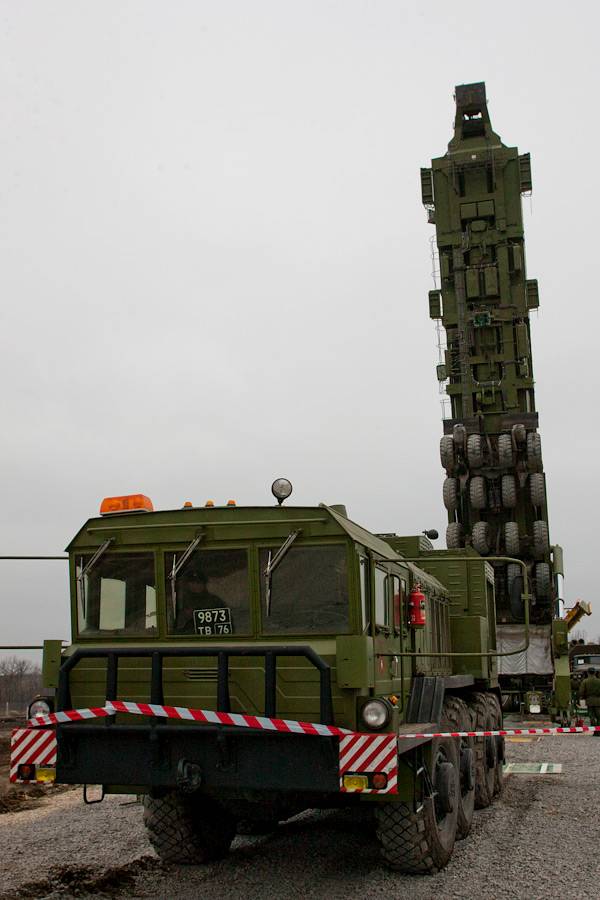
Loading missiles complex "Topol-M" in the mine launcher. Photo of the Ministry of Defense of the Russian Federation
The newer missile project for the P-30 “Bulava” submarines, on the contrary, provided for the use of solid propellant engines in all three stages. Among other things, it allowed reducing the length of the rocket to 12,1 m and reducing the starting weight to 36,8 t. At the same time, the product carries a combat load of 1,15 t mass and delivers it to a distance of up to 8-9 thousand km. Not so long ago, it was announced that a new modification of the Bulava, with different dimensions and increased mass, would be developed, due to which it would be possible to increase the combat load.
Development trends
It is well known that in recent decades, the Russian command has relied on the development of promising solid-fuel missiles. The result was the consistent appearance of the Topol and Topol-M complexes, and then the Yars and Rubezh complexes, the missiles of which are completed with solid propellant rocket motors. LREs, in turn, remain only on relatively old "land" missiles, the operation of which is already coming to an end.
However, a complete rejection of liquid ICBMs is not planned yet. As a replacement for the existing UR-100Н УТТХ and Р-36М / М2, a new product PC-28 "Sarmat" is created with a similar power plant. Thus, in the foreseeable future, liquid engines will be used only on heavy-class missiles, while other systems will be equipped with solid-fuel systems.
The situation with submarine ballistic missiles looks similar, but has some differences. In this area, a significant number of liquid missiles are also preserved, but the only new project provides for the use of solid propellant rocket motors. Further developments can be foreseen by examining the existing plans of the military department: the development program of the submarine fleet clearly indicates which missiles have a great future, and which ones will be written off over time.
Older R-29РМ missiles and their latest modifications are intended for the nuclear submarines of the 667БДР and 667БДРМ projects, while the Р-30 were developed for use on the newest missile carriers of the 955 project. The ships of the 667 family gradually develop their resources and over time will be written off due to complete moral and physical obsolescence. Together with them, respectively, the fleet will have to abandon the missiles of the P-29RM family, which simply remain without carriers.
The first missile submarine cruisers of the 955 "Borey" project have already been adopted by the Navy, and in addition, the construction of new submarines continues. This means that in the foreseeable future, the fleet will receive a significant grouping of Bulava missile carriers. The service "Boreev" will continue for several decades, and therefore the P-30 rocket will remain in service. It is possible to create new modifications of such weapons that can complement and then replace the ICBM basic version. Anyway, the products of the P-30 family will eventually replace the aging P-29РМ missiles as the basis of the naval component of the strategic nuclear forces.
Advantages and disadvantages
Different classes of rocket engines used on modern strategic missiles have their pros and cons of one kind or another. Liquid and solid fuel systems are superior to each other in one parameter, but lose in others. As a result, customers and designers have to choose the type of power plant in accordance with existing requirements.
Conditional rocket engine differs from solid propellant rocket motors by higher specific impulse indices and other advantages, which allows to increase the payload. At the same time, the corresponding supply of liquid fuel and oxidant leads to an increase in the size and weight of the product. Thus, the liquid-propellant missile turns out to be the optimal solution in the context of deploying a large number of silo launchers. In practice, this means that at present a significant part of the mines are occupied with the P-36М / М2 and УР-100Н УТТХ rockets, and in the future they will be replaced by the prospective PC-28 "Sarmat".
Rockets of the "Topol", "Topol-M" and "Yars" types are used both with mine installations and as part of mobile soil complexes. The last opportunity is provided, first of all, by a small starting weight of rockets. A product weighing no more than 50 can be placed on a special multi-axle chassis, which is not the case with existing or hypothetical liquid-propellant rockets. The new PC-26 complex “Frontier”, considered as a replacement for Topol, is also based on similar ideas.
A characteristic feature of missiles with solid-propellant rocket motors in the form of a reduction in size and mass also matters in the context of fleet armaments. The missile for the submarine should have a minimum size. The ratio of the dimensions and flight characteristics of the P-29PM and P-30 missiles shows how exactly these advantages can be used in practice. So, unlike their predecessors, the newest submarines of the 955 project do not need a large superstructure covering the upper part of the launchers.
However, the reduction in weight and dimensions has its price. Lighter solid-propellant missiles differ from other domestic ICBMs with a lower combat load. In addition, the specificity of solid propellant rocket motors leads to less high weight perfection in comparison with liquid rockets. However, it seems that such problems are solved by creating more efficient combat units and control systems.
***
Despite the lengthy scientific and design work, as well as a lot of disputes, the conventional opposition of liquid and solid fuel engines has not yet ended with an unconditional victory of one of the "competitors". On the contrary, the Russian military and engineers came to a balanced conclusion. Engines of different types are used in those areas where they can show the best results. Thus, light missiles for land mobile complexes and submarines receive solid propellant rocket propellers, while heavy rockets with a miner launch must now be completed with liquid installations.
In the existing situation, given the existing opportunities and prospects, this approach looks the most logical and successful. It allows in practice to obtain maximum results with a noticeable reduction in the influence of negative factors. It is possible that such an ideology will continue in the future, including with the use of promising technologies. This means that in the near and in the distant future, Russian strategic nuclear forces will be able to receive modern intercontinental ballistic missiles with the highest possible characteristics and combat capabilities that directly affect the effectiveness of deterrence and the security of the country.
On the materials of the sites:
http://ria.ru/
http://tass.ru/
http://interfax.ru/
http://flot.com/
http://rbase.new-factoria.ru/
http://kapyar.ru/
http://missiles.ru/
http://makeyev.ru/

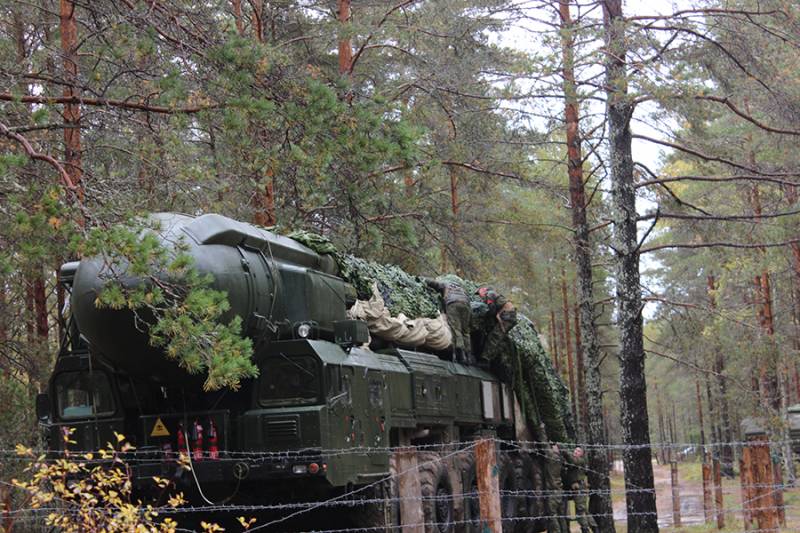
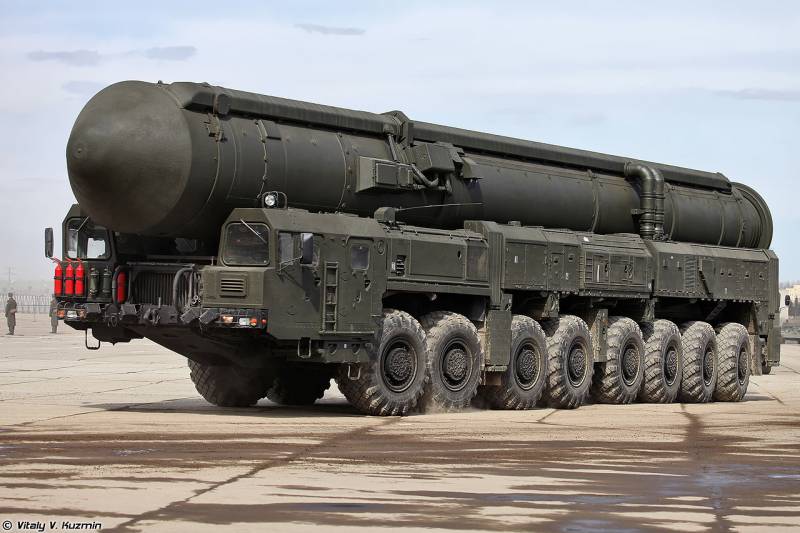

Information